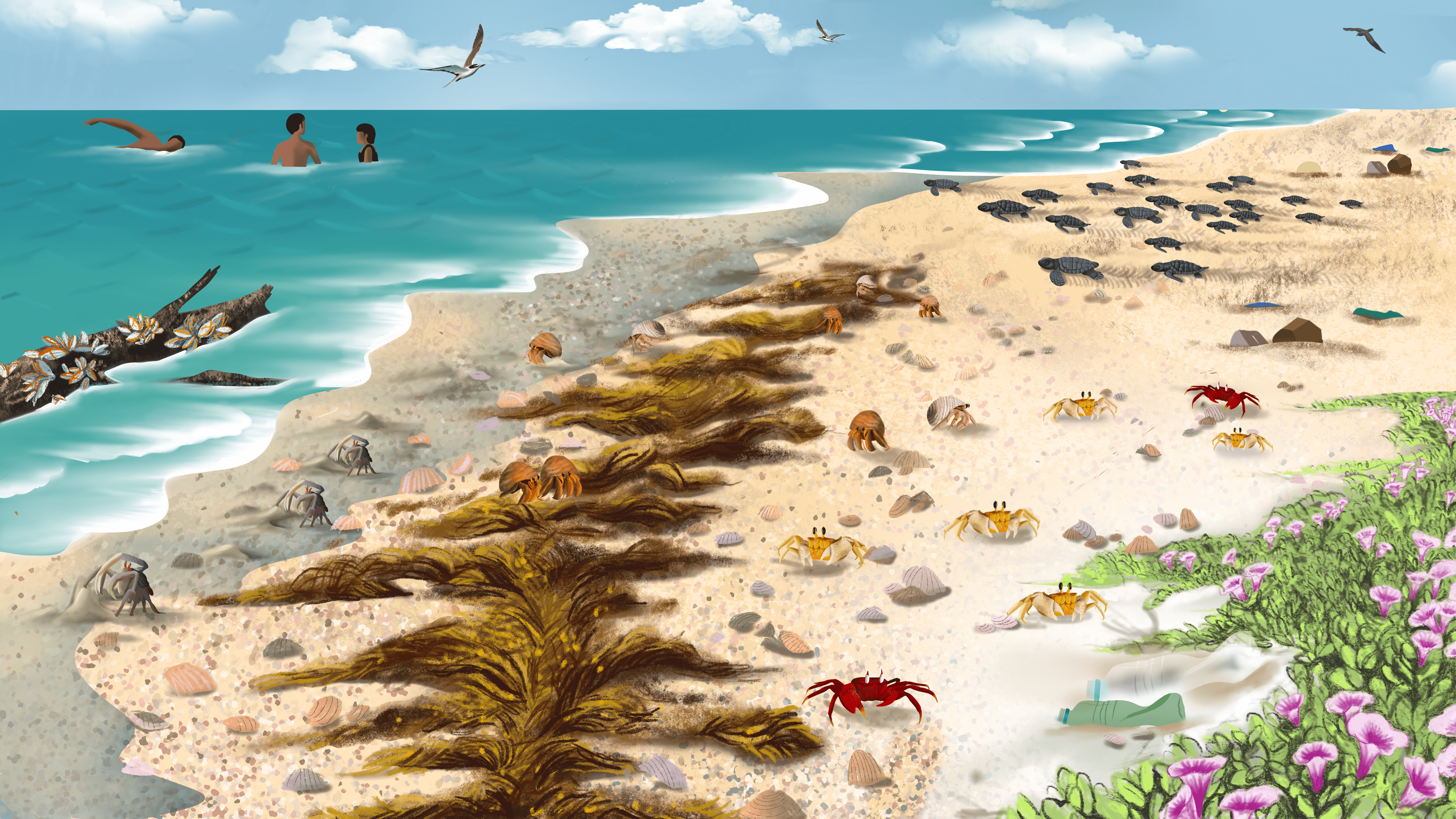Sandy shores or beaches are deposits of sand, gravel and shells that cover the shoreline in many places around the world. In India, the sandy shores consist of nearly 43% of India's coastline. These environments are highly dynamic due to their constant exposure to waves or tides and hence are in a daily battle with air, water, sand and sunlight. Continuously moving sand, drying due to sunlight exposure, salt spray and poor soil make this ecosystem a tough one for species to survive in. However, due to these circumstances, fauna and flora inhabiting these regions are uniquely adapted to the constantly varying conditions.

Crabs, worms, insects, seaweed, and sea turtles
In addition to providing natural coastal defence from storms, sandy beaches give rise to unique, specialised species of fauna that are catered to this highly dynamic environment, including those that live in water, those that live on land and those that are adapted to both. A distinctive characteristic of species that live here is their ability to be small and buried in response to the collective action of the waves, sunlight, exposure to air and salt spray. They are also an important feeding ground for sea birds and are also important nesting and breeding grounds for a variety of animals that come here during their respective seasons. Moreover, sandy beaches offer other benefits as well, such as recreation, access to fisheries and ground reserves for drinking water while also acting as a natural barrier for coastal protection between the inland and the ocean.